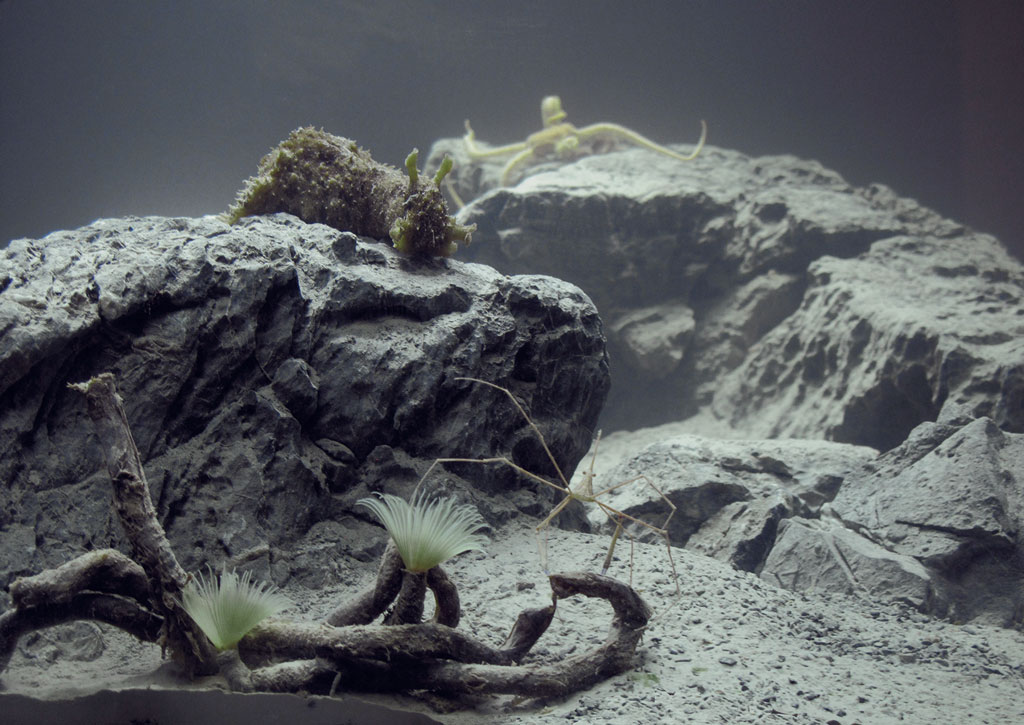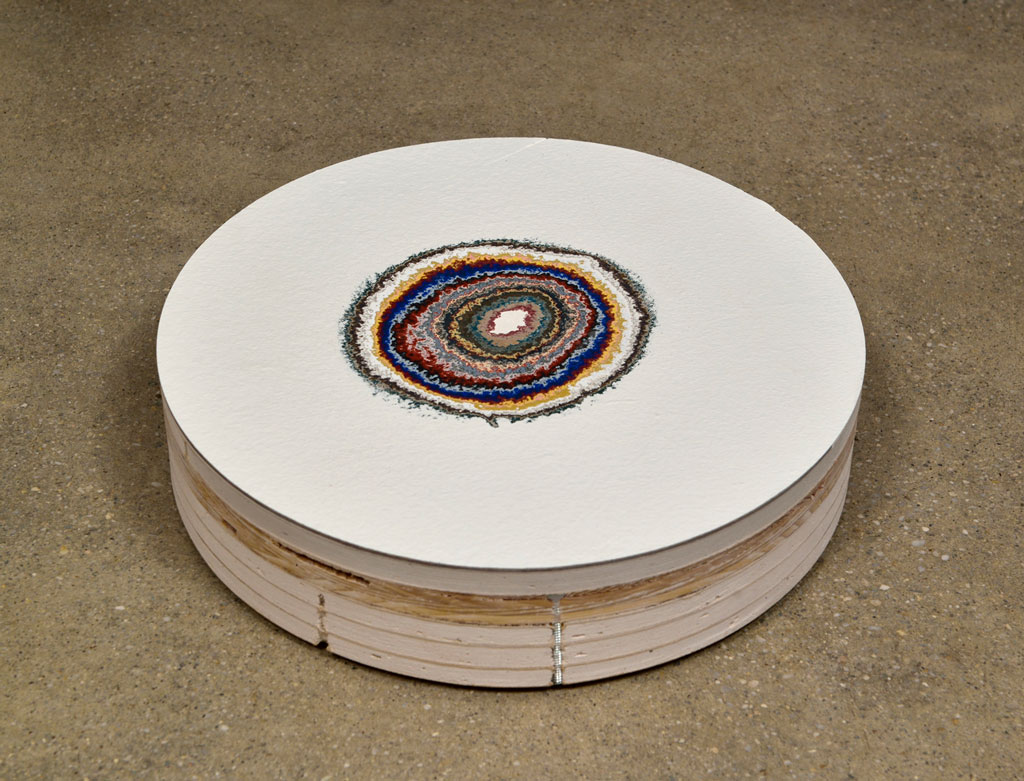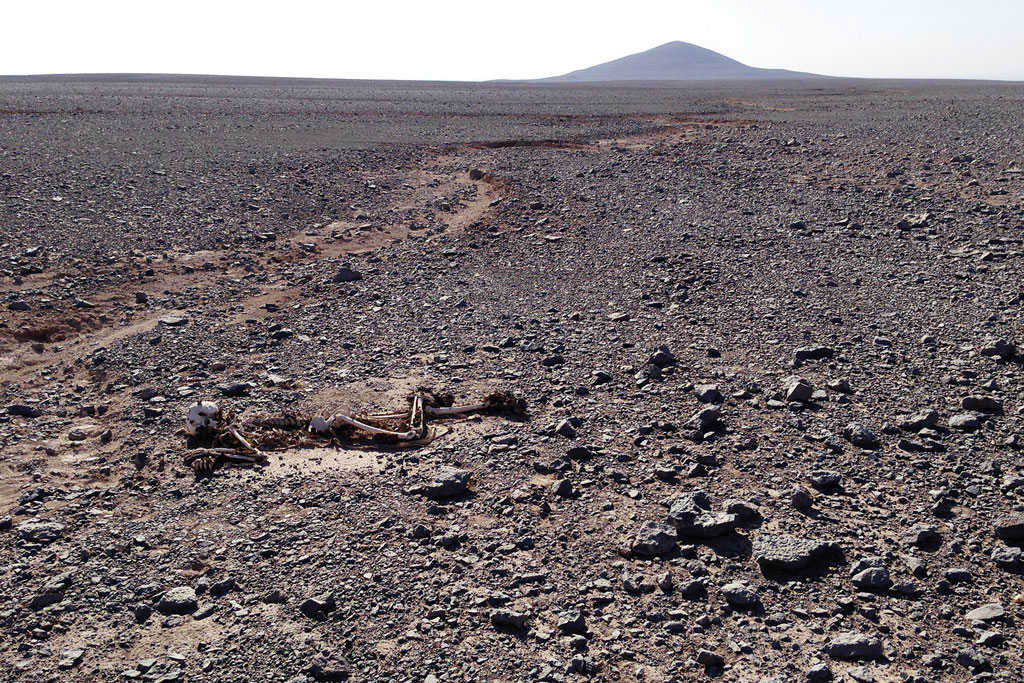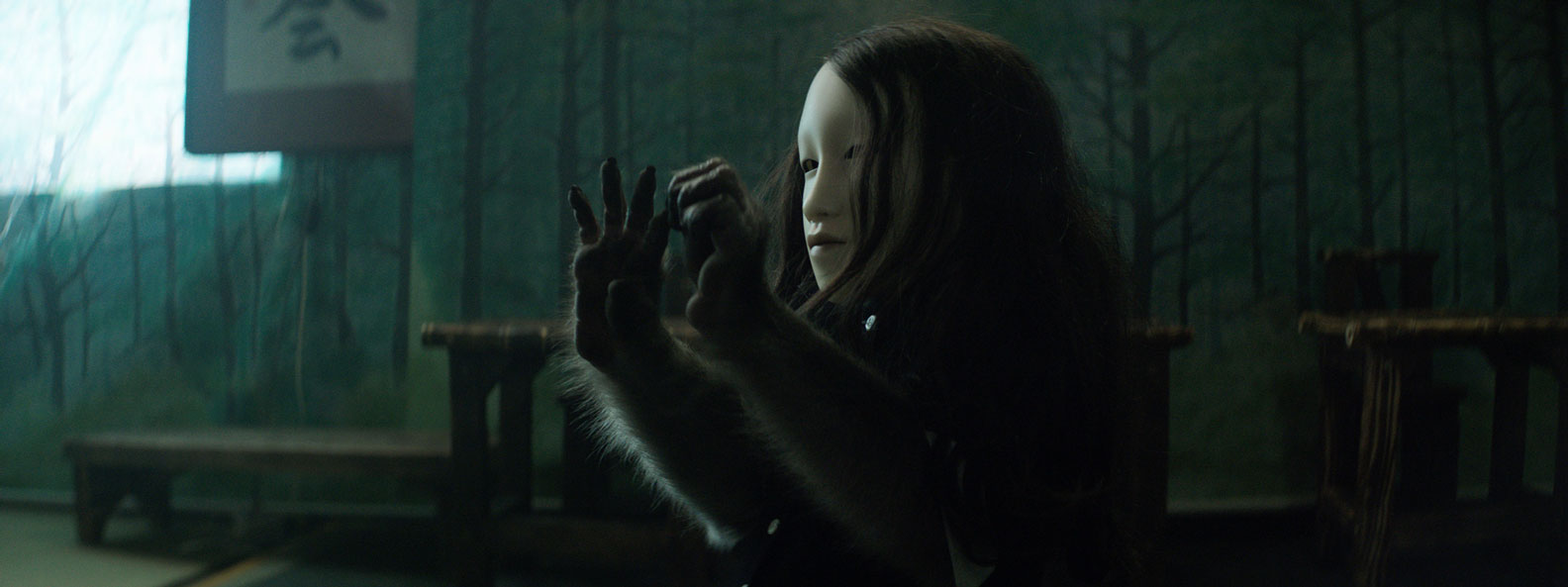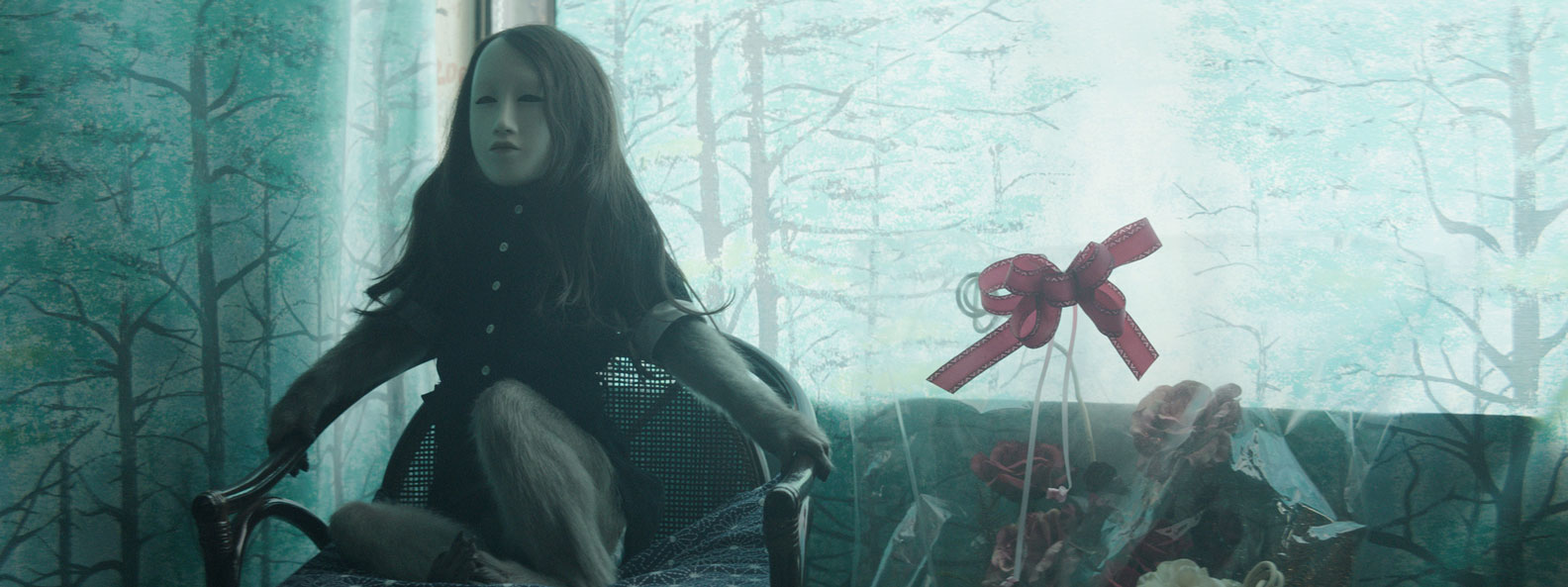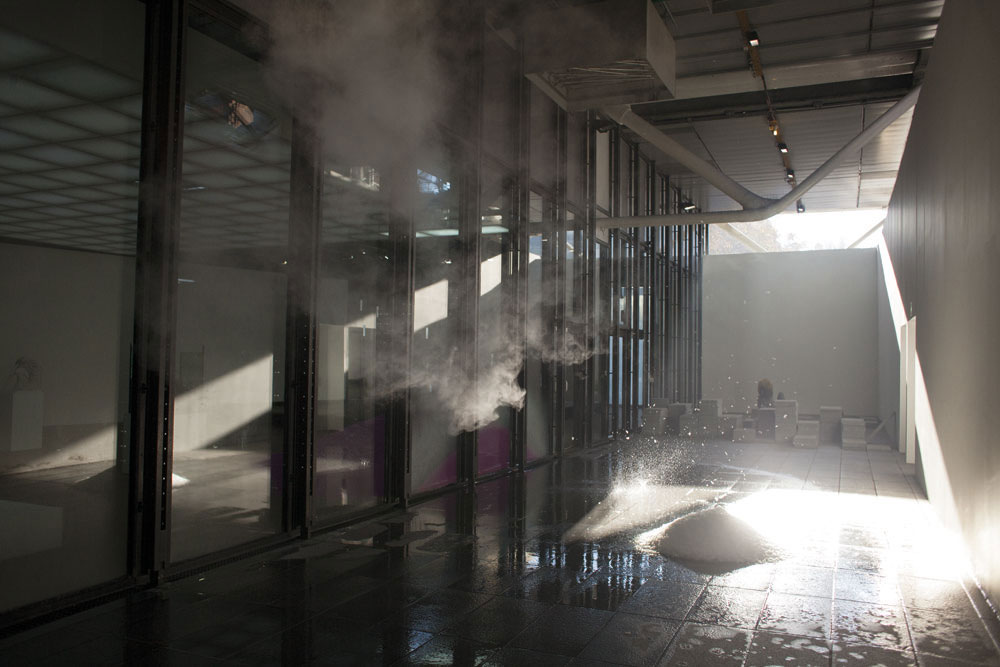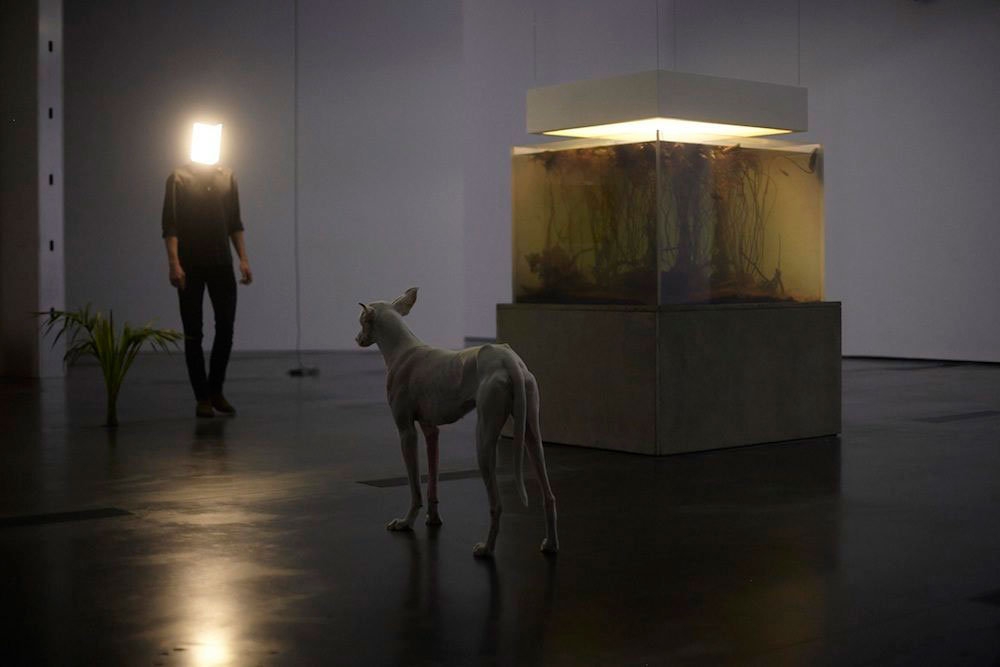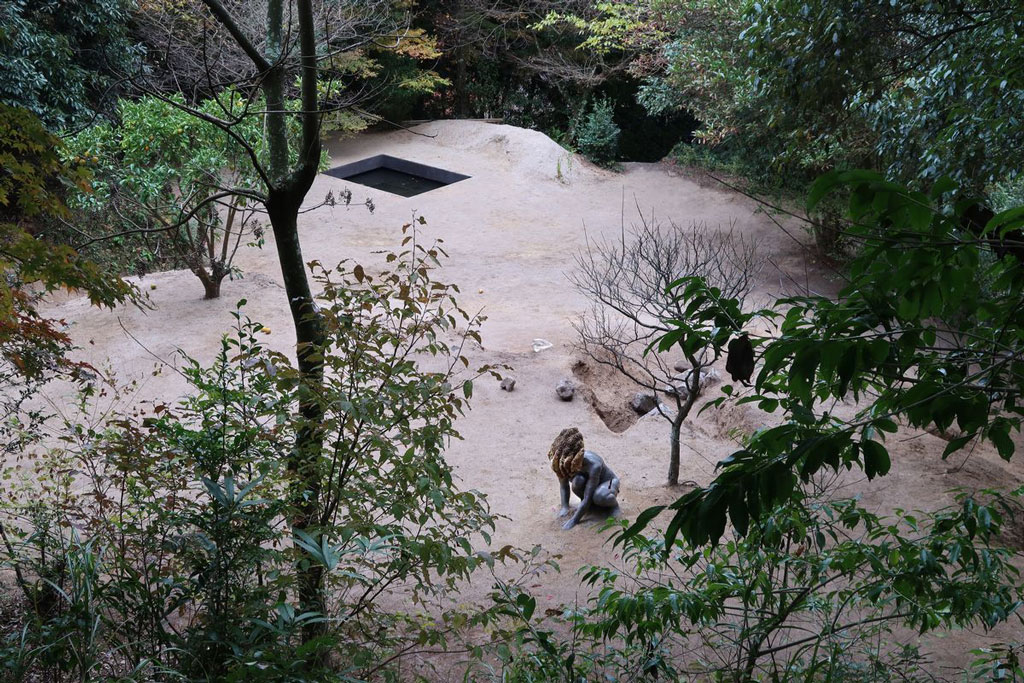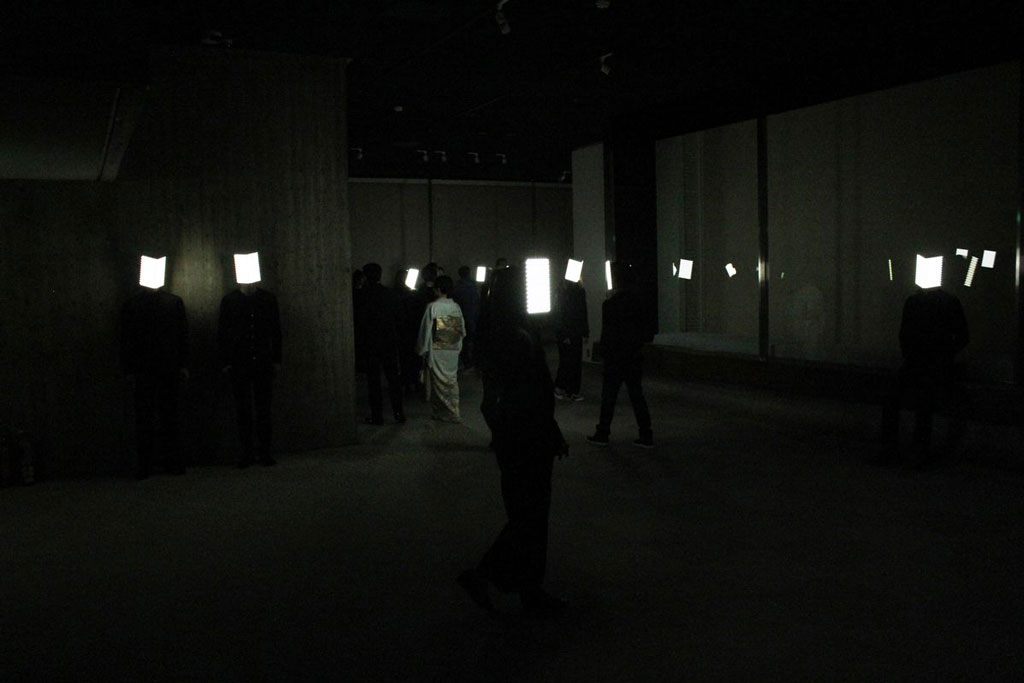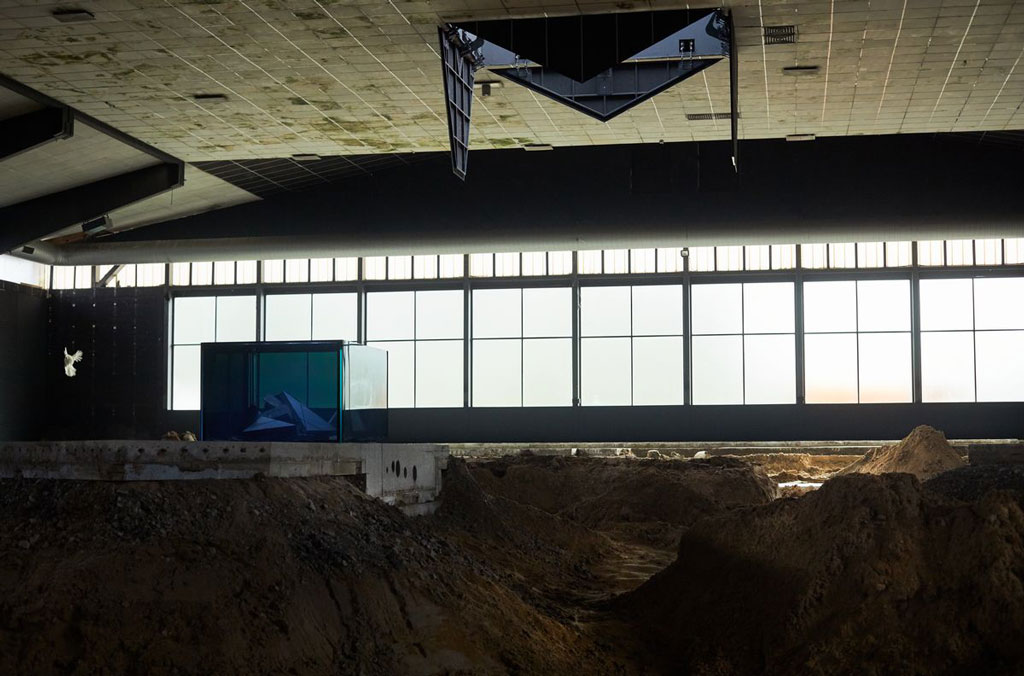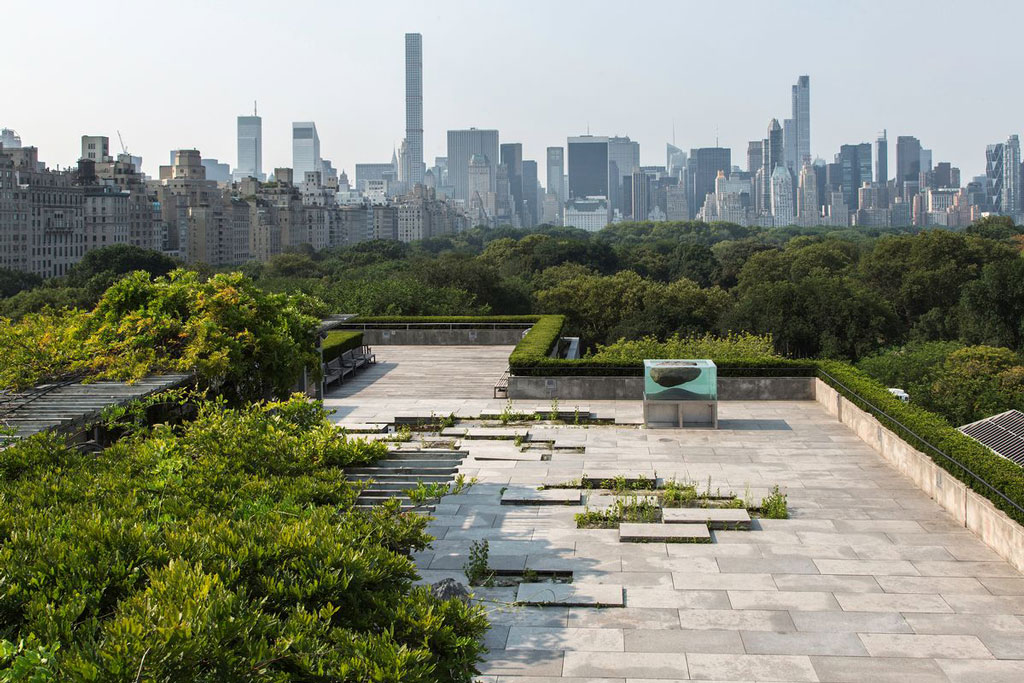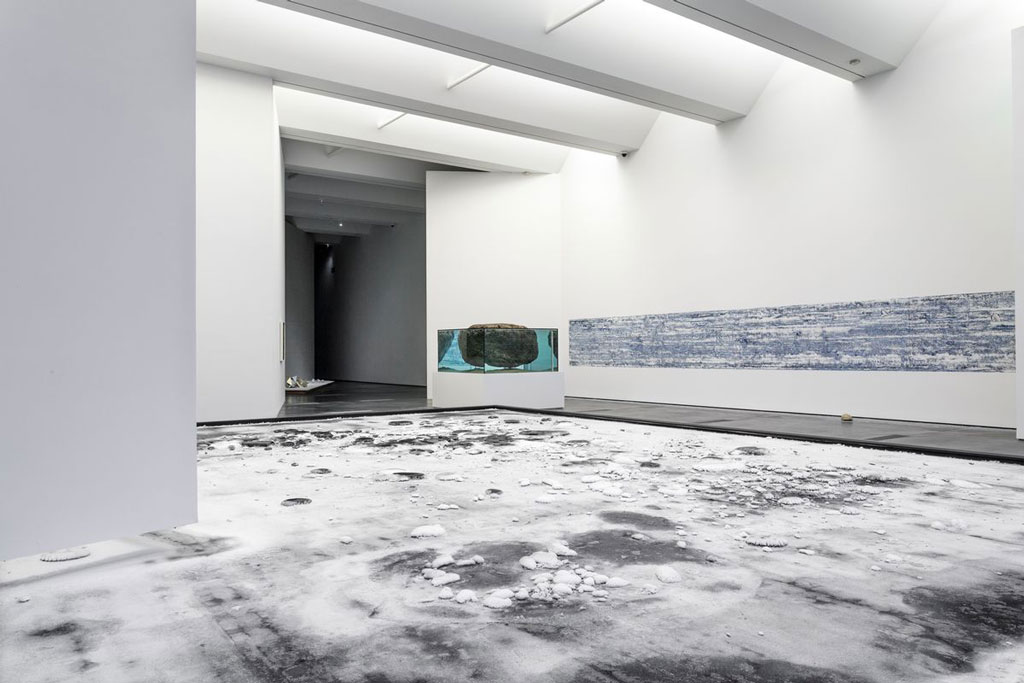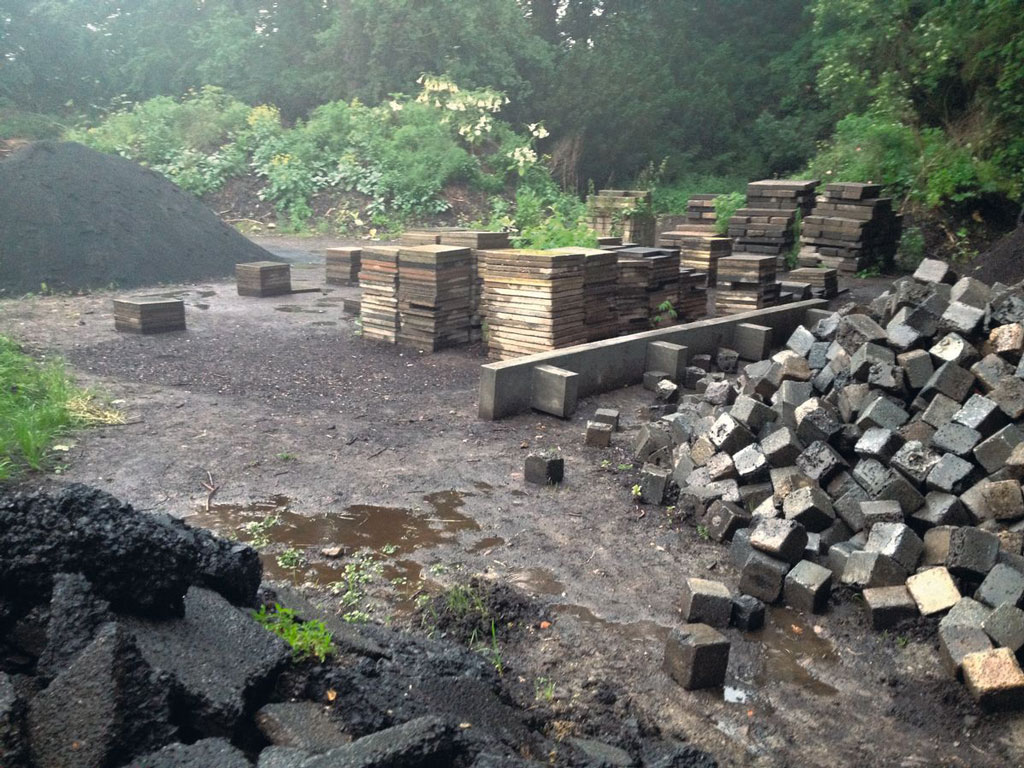TRACES: Pierre Huyghe
 Today is the occasion to bear in mind Pierre Huyghe (11/9/1962- ), his works often present themselves as complex systems characterized by a wide range of life forms, inanimate things and technologies. His constructed organisms combine not only biological, technological and fictional elements, they also produce an immersive, constantly changing environment, in which humans, animals and non-beings learn, evolve and grow. Through documents or interviews, starting with: moments and memories, we reveal out from the past-unknown sides of big personalities, who left their indelible traces in time and history…
Today is the occasion to bear in mind Pierre Huyghe (11/9/1962- ), his works often present themselves as complex systems characterized by a wide range of life forms, inanimate things and technologies. His constructed organisms combine not only biological, technological and fictional elements, they also produce an immersive, constantly changing environment, in which humans, animals and non-beings learn, evolve and grow. Through documents or interviews, starting with: moments and memories, we reveal out from the past-unknown sides of big personalities, who left their indelible traces in time and history…
By Efi Michalarou
 Pierre Huyghe studied at École Nationale Supérieure des Arts Décoratifs in Paris from 1982 to 1985. Since graduating he has been exhibited at numerous international establishments, including a recent retrospective that toured galleries of the world, starting at the Pompidou Centre (Paris). He has also won several awards including the Roswitha Haftmann Prize in 2013 and the Smithsonian American Art Museum’s Contemporary Artist Award in 2010. Huyghe creates films, installations, and events that blur fact and fiction, reinvent rituals of social engagement, and use the exhibition model as a site for playful experimentation. He is a multi-disciplinary artist whose art is centred upon the importance of the image as a semiotic device. All images are interrelated, and it is this dynamic which facilitates an exploration of audience expectations by creating works which must be viewed as part of a whole. Much of his practice focuses upon our innate ability to create, as symbolised by the construction sites present in some of his works. Huyghe presents his audience with a portrait of society as being a palimpsestic entity, upon which each generation leaves its mark. The individuals who make up these societies appear in his work as being divided: they are unique and a part of society. This is mirrored by the function of his works as each being an individuated entity that can be interpreted singularly, but whose full meaning is only truly unearthed within the context of the exhibition in which it belongs. Huyghe’s work can thus be viewed as essentialist; everything has to exist as part of a unity and cannot exist in isolation as it is the structure the object is tied to that gives it the necessary attributes and identity. This can be applied not only to his works, but in a broader sense to all images. In this way the artist’s oeuvre becomes an exploration of freedom and the individual’s ambition towards it. The human form itself also plays an important role in Huyghe’s work and reflects the viewer’s presence within this system of meanings and relations. There is a propensity towards the animation of objects as exemplified by the inclusion of aquaria in some of his installations. These can be filled with life, which appear to be separated from the viewer, but is still essentially tied to the whole via that which is outside the aquarium. Furthermore, these are fashioned from electrochromatic glass, which at one moment allows the audience to see what is within before suddenly becoming obscured. This suggests the inability to understand through mere perception alone and that meaning can only be divulged by a system of semiotic understanding. In “Dubbing” (1996), Huyghe screens Steven Spielberg’s film “Poltergeist” but focuses his camera on the fifteen actors who have been hired to do the French voiceovers rather than the projection of the film itself, which is only visible to the actors. In “Blanche-Neige” (1997), Huyghe revealed the face and story of Lucie Dolène, the French voiceover artist whom Walt Disney hired to do the French language version of Snow White. When Disney subsequently reissued the film and used Dolmen’s voice without her permission, she sued the company for the right to own her own voice. Huyghe’s film is a simply edited headshot of Dolène recounting her experience in her unmistakable (to French ears) voice. Huyghe’s two-channel video “The Third Memory” (1999), commissioned by The Renaissance Society at the University of Chicago and later exhibited at the Centre Georges Pompidou, Paris, takes as its starting point Sidney Lumet’s 1975 film “Dog Day Afternoon” starring Al Pacino in the role of the bank robber John Wojtowicz. Huyghe’s video reconstructs the set of Lumet’s film, but he allows Wojtowicz himself, now a few dozen years older and out of jail, to tell the story of the robbery. Huyghe juxtaposes images from the reconstruction with footage from “Dog Day Afternoon” demonstrating that Wojtowicz’s memory has been irrevocably altered by the film about his life. “Streamside Day Follies” (2003) was commissioned by the DIA Art Foundation and involved the integrated relationship between three locales: a fictionalized community in the Hudson Valley that is launching an equally fictional neighborhood festival; a film verité that captures the proceedings of the fledgling festival; and DIA’s former Manhattan exhibition space. “A Journey that Wasn’t” (2005) was commissioned by the Public Art Fund and the Whitney Museum of American Art, New York, and entailed similar intersections of a fictional place, a film, and live convergence. As a film work, “A Journey that Wasn’t” uxtaposes a sailing expedition from Tierra del Fuego in search of an uncharted island off the coast of Antartica, with the recording (and re-recording) of its symphonic score at the Wollman ice rink in Central Park. “The Host and the Cloud” (2010) is a feature-length film that was shot entirely within the dormant building that had housed the National Museum of Arts and Popular Traditions, Paris. The rambling, melancholy, somewhat sci-fi narrative is structured around the celebrations of Halloween, Valentine’s Day, and May Day. Pierre Huyghe’s “Untitled (Human Mask)” (2014) film takes viewers to a Japanese landscape scarred by the recent tsunami and the Fukushima nuclear disaster. There we witness a scene inspired by real-life events: in an empty, dilapidated restaurant, a monkey whose face is concealed by a traditional theater mask seems to be waiting for customers who never come. Impatiently pacing the premises, stopping to listen for the sound of someone approaching, or gazing out the window, the character trapped in that surreal setting performs a routine whose theme, according to the artist himself, is none other than the human condition. Pierre Huyghe appointed artistic director of the triennial Okayama Art Summit, Japan (27/9-24/11/19).
Pierre Huyghe studied at École Nationale Supérieure des Arts Décoratifs in Paris from 1982 to 1985. Since graduating he has been exhibited at numerous international establishments, including a recent retrospective that toured galleries of the world, starting at the Pompidou Centre (Paris). He has also won several awards including the Roswitha Haftmann Prize in 2013 and the Smithsonian American Art Museum’s Contemporary Artist Award in 2010. Huyghe creates films, installations, and events that blur fact and fiction, reinvent rituals of social engagement, and use the exhibition model as a site for playful experimentation. He is a multi-disciplinary artist whose art is centred upon the importance of the image as a semiotic device. All images are interrelated, and it is this dynamic which facilitates an exploration of audience expectations by creating works which must be viewed as part of a whole. Much of his practice focuses upon our innate ability to create, as symbolised by the construction sites present in some of his works. Huyghe presents his audience with a portrait of society as being a palimpsestic entity, upon which each generation leaves its mark. The individuals who make up these societies appear in his work as being divided: they are unique and a part of society. This is mirrored by the function of his works as each being an individuated entity that can be interpreted singularly, but whose full meaning is only truly unearthed within the context of the exhibition in which it belongs. Huyghe’s work can thus be viewed as essentialist; everything has to exist as part of a unity and cannot exist in isolation as it is the structure the object is tied to that gives it the necessary attributes and identity. This can be applied not only to his works, but in a broader sense to all images. In this way the artist’s oeuvre becomes an exploration of freedom and the individual’s ambition towards it. The human form itself also plays an important role in Huyghe’s work and reflects the viewer’s presence within this system of meanings and relations. There is a propensity towards the animation of objects as exemplified by the inclusion of aquaria in some of his installations. These can be filled with life, which appear to be separated from the viewer, but is still essentially tied to the whole via that which is outside the aquarium. Furthermore, these are fashioned from electrochromatic glass, which at one moment allows the audience to see what is within before suddenly becoming obscured. This suggests the inability to understand through mere perception alone and that meaning can only be divulged by a system of semiotic understanding. In “Dubbing” (1996), Huyghe screens Steven Spielberg’s film “Poltergeist” but focuses his camera on the fifteen actors who have been hired to do the French voiceovers rather than the projection of the film itself, which is only visible to the actors. In “Blanche-Neige” (1997), Huyghe revealed the face and story of Lucie Dolène, the French voiceover artist whom Walt Disney hired to do the French language version of Snow White. When Disney subsequently reissued the film and used Dolmen’s voice without her permission, she sued the company for the right to own her own voice. Huyghe’s film is a simply edited headshot of Dolène recounting her experience in her unmistakable (to French ears) voice. Huyghe’s two-channel video “The Third Memory” (1999), commissioned by The Renaissance Society at the University of Chicago and later exhibited at the Centre Georges Pompidou, Paris, takes as its starting point Sidney Lumet’s 1975 film “Dog Day Afternoon” starring Al Pacino in the role of the bank robber John Wojtowicz. Huyghe’s video reconstructs the set of Lumet’s film, but he allows Wojtowicz himself, now a few dozen years older and out of jail, to tell the story of the robbery. Huyghe juxtaposes images from the reconstruction with footage from “Dog Day Afternoon” demonstrating that Wojtowicz’s memory has been irrevocably altered by the film about his life. “Streamside Day Follies” (2003) was commissioned by the DIA Art Foundation and involved the integrated relationship between three locales: a fictionalized community in the Hudson Valley that is launching an equally fictional neighborhood festival; a film verité that captures the proceedings of the fledgling festival; and DIA’s former Manhattan exhibition space. “A Journey that Wasn’t” (2005) was commissioned by the Public Art Fund and the Whitney Museum of American Art, New York, and entailed similar intersections of a fictional place, a film, and live convergence. As a film work, “A Journey that Wasn’t” uxtaposes a sailing expedition from Tierra del Fuego in search of an uncharted island off the coast of Antartica, with the recording (and re-recording) of its symphonic score at the Wollman ice rink in Central Park. “The Host and the Cloud” (2010) is a feature-length film that was shot entirely within the dormant building that had housed the National Museum of Arts and Popular Traditions, Paris. The rambling, melancholy, somewhat sci-fi narrative is structured around the celebrations of Halloween, Valentine’s Day, and May Day. Pierre Huyghe’s “Untitled (Human Mask)” (2014) film takes viewers to a Japanese landscape scarred by the recent tsunami and the Fukushima nuclear disaster. There we witness a scene inspired by real-life events: in an empty, dilapidated restaurant, a monkey whose face is concealed by a traditional theater mask seems to be waiting for customers who never come. Impatiently pacing the premises, stopping to listen for the sound of someone approaching, or gazing out the window, the character trapped in that surreal setting performs a routine whose theme, according to the artist himself, is none other than the human condition. Pierre Huyghe appointed artistic director of the triennial Okayama Art Summit, Japan (27/9-24/11/19).




